Keep It Simple: How to Apply the 80/20 Rule to Your Everyday Living
Are you tired of feeling guilty for “cheating” on your diet?
Does the guilt cause you then to overeat for several days afterward which sabotages some of your progress?
Are you looking for an easier way to manage your healthy lifestyle choices? So you can stay on track and finally meet (or maintain) your weight and fitness goals?
If so, then applying the 80/20 rule to your diet and exercise plans may be the right fit for you.
What Is the 80/20 Rule?
The 80/20 rule comes from the famous Pareto principle that 80% of the effects come from 20% of the causes. While this originally related to the distribution of wealth in Italy, it’s now being applied to other things, including healthy lifestyle choices.
By following the 80-20 rule, you will focus on eating well and exercising 80% of the time. For example, eating well and working out during the week, and indulging (a bit) on the weekend. Or, if you tend to go out with your coworkers for lunch on Friday or out with your friends on Friday night, perhaps your indulging days could be Friday and Saturday. The choice is yours.
In short, it doesn’t matter which times/meals you choose to have as your 20% indulging time, you need to keep it under 20% of the time.
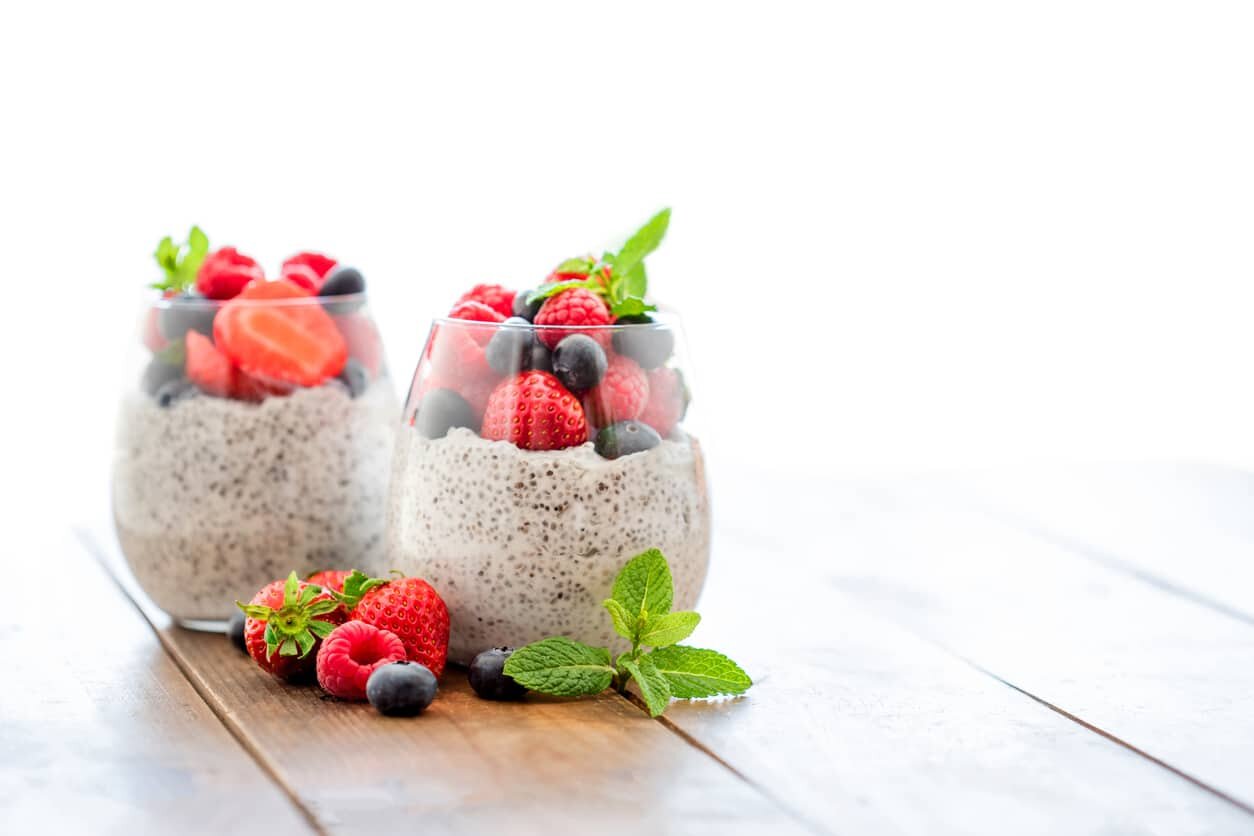
What Can You Eat Following the 80-20 Rule?
For the majority (80%) of the time, you should focus on eating healthy, nutritious foods.
This includes a low-calorie breakfast, packed with protein and fiber to keep you full longer and fight off the desire to snack (or eat those bagels one of your coworkers loves to bring to the office). By limiting your calories at breakfast, you start your day off on the right foot.
Lunch and dinner options can vary widely depending on your personal preferences. Focus on whole foods that offer a variety of nutrients: lean proteins, whole grains, and veggies and fruits chosen from the colors of the rainbow.
For snacks, choose foods like nuts, yogurt, fruits or veggies with hummus or salsa.
During your 20% “indulging” time, try to choose things you really enjoy. Don’t grab the first sweet or salty snack that comes your way. Make it something you have been craving all week or that you don’t want to live without.
Keep in mind that this doesn’t mean you get to eat an entire pizza or a whole pint of ice cream.
While following the 80/20 rule, as with any dietary plan, practicing portion control is a key factor for success.
How Much Exercise Do You Need to Do?
The experts say the average adult should do 2 1/2 hours of moderate activity per week and do muscle-building exercises at least 2 days per week.
This equates to a minimum of a half-hour each day (Monday through Friday) and a weight training session two days a week.
Or, if you prefer or your schedule doesn’t allow time every workday, you can add some time to your workouts and cut the sessions down to a few days per week.
How you choose to get your half-hour of “moderate activity” is up to you.
Walking at a rate where you are breathing harder than normal but can still talk well enough to keep up a conversation works fine.
Of course, biking, rollerskating, dancing, running, or any other kind of physical activity you enjoy works just fine, too!
Many may find keeping an exercise log beneficial in making sure they get the right amount of each type of exercise each week.
You just need to get moving. Your heart and body will thank you!
How Can I Live Better in 2021?
It’s important to start and maintain a healthier diet. Remember to eat fruits and vegetables, nuts, and grains that will give you energy throughout your day.
How to Maintain a Healthy Lifestyle
Eat more fruits and vegetables and eat fewer carbohydrates, reduce sodium intake as well as bad fats. No need to eat junk food and avoid sugar.
What Are Healthy Lifestyle Examples?
1. Sleep more.
2. Strive to workout at least once per day.
3. Consume more Vegetables.
4. Consume more whole-grain foods and cereals (the less processed, the better).
5. Avoid tobacco and alcohol.
6. Maintain a positive, happy view of life.
Give the 80/20 Rule a Try
Try following the 80-20 rule diet for a few weeks and see how great you’ll feel. Say goodbye to guilt and not having flexibility in your healthy lifestyle choices. Losing weight and staying fit doesn’t have to be complicated.
The right mindset doesn’t hurt either. For more about that, here’s a podcast about how to maintain the right mindset to succeed following the 80/20 rule.

You Might also like
-
12 Brilliant Gym Tips For A More Efficient Workout
12 Brilliant Gym Tips For A More Efficient Workout
Do you think you’re wasting time at the gym? Efficient workouts equal fewer excuses. Here are some gym tips to help you trim the fat off your workout routine.
Do you workout regularly? If so, you’re already in an elite group.
According to new research, although more than 75% of people claim they want to get in shape and look great, only 31% actually make exercise a routine habit.
Yet, are you getting the most from your time at the gym? Do you leave with sweat dripping, adrenaline pumping and those exertion-fueled endorphins running in your veins? Or, are you still struggling to see the results you crave?
If it’s the latter, you’ve come to the right place. Today, we’re sharing 12 simple gym tips that can help you supercharge your workouts and bump up the ROI on that membership.
Ready to learn more? Let’s get started!
1. Start with a Plan
You walk into the gym and take a long look around. There are treadmills on one wall, ellipticals on another and a giant weightlifting area. It’s inspiring. It’s exciting. It’s also incredibly overwhelming.
You spend more than a few minutes figuring out which area you want to visit first and which part of your workout you want to prioritize.
Does this scenario sound familiar?
If so, try planning out your next gym workout. Before you even get in the car and head out, jot down what you want to focus on, how long you want to spend there and in what order you’re going to tackle it all.
Doing so not only helps you stay organized and start your workout quicker. It also makes sure your heart rate doesn’t drop as you spend time perusing the options. One way to ensure you’re always ready to go? Have a backup plan ready in case the machines you want are full.
2. Shorten and Strengthen Your Workouts
It seems like simple logic: The longer you workout, the better you’ll look and feel, right?
Not quite.
If your usual gym session includes exercising for an hour or two at a slow, moderate pace, it’s time to kick it up a notch. Studies show that interval training, or working out in smaller, 10-30 minute bursts with rests in between, is more beneficial than marathon sweat sessions.
Why? You’ll increase your heart rate, build your endurance and maximize your speed when you focus on working your body to its top capacity. When you go for longer, something has to give and it’s usually your body’s performance.
So, the next time you’re looking at the indoor track and dreading that five-mile stretch you’ve been doing, try tackling one mile instead and see how much more powerful you feel.
High-Intensity Interval Training
A popular way to add shorter, more powerful workouts to your gym routine is to try high-intensity interval training or HIIT training. Put simply, this is the method of dividing your overall workout into blocks of intense exertion along with designated times for rest.
Focus on exercises that get your heart rate and lungs working to their top capacity, and sustain the movements for a few minutes at a time. Of course, if you have any cardio or health concerns, talk to your doctor before trying a HIIT routine. It is also recommended against for those just starting out in their fitness routine.
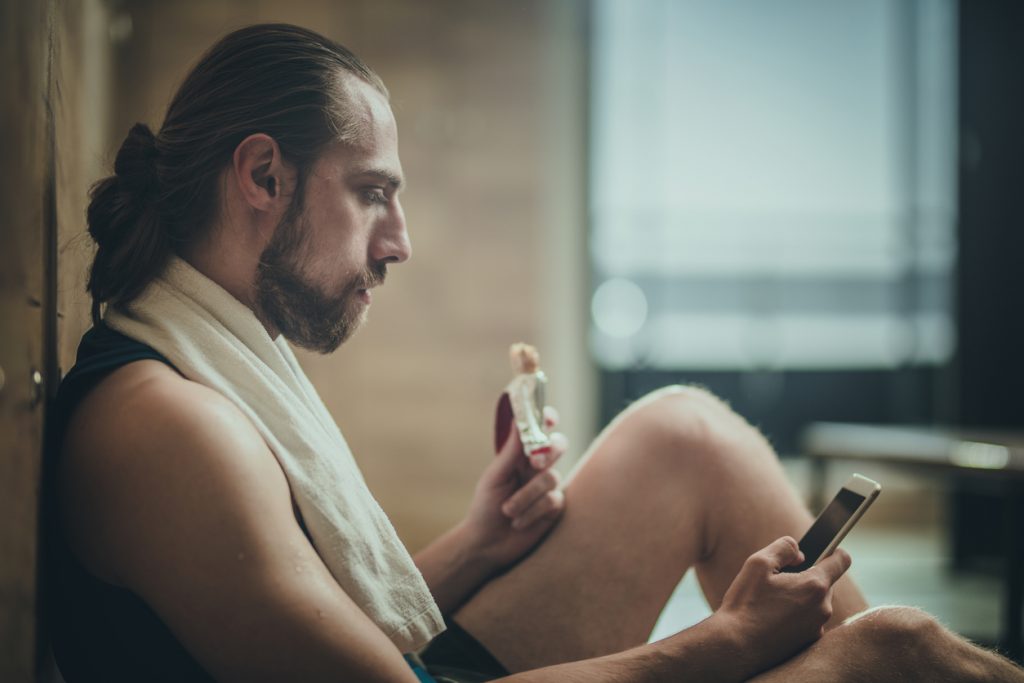
3. Add Protein
After an especially exhausting workout, your muscles need to rebuild themselves. This is true for both cardio-centric exercises as well as strength-building ones. To amplify the results you’ll see and improve your body’s ability to bounce back, it can be helpful to add an element of protein into your post-workout meal or snack.
A simple protein shake, made with either whey or soy, is a great way to recharge and refuel after your time at the gym. You can also find protein bars and other snacks that make refilling on the go both simple and quick.
While you sip or munch, you’ll be helping your body repair any damage it sustained during your workout. You’ll also give your immune system a boost, rebuild your stored glycogen, and regrow your muscles. It’s a simple trick that can cap off a great session and help you see results quicker.
4. Pump the Right Tunes
It might sound unimportant, but the idea that the right music can affect your workout is backed by science.
While there is no one-size-fits-all playlist that will make you magically grow those muscles you want, your best bet is to stick to jams that make you feel seriously inspired. From the soundtrack to Space Jam to Madonna, anything goes. One rule? If it puts you to sleep or makes you want to cry, save it for another time.
Instead, invest in a great pair of workout headphones and turn up the dial on those energy-infused rockers that make you want to holler, howl and show your strength. Start the playlist while you’re on the way to the gym and let that feeling follow you.
5. Do a Digital Detox
One surefire way to get less from your workout? Hop off the treadmill every five minutes to respond to that group chat, take a picture of your gear or post on social media.
Not only are you allowing your heart rate to fluctuate as you momentarily disengage, but you’re also losing that valuable mental focus. If you must have your phone on you, activate airplane or vibrate mode. Otherwise, leave it in the locker room.
6. Know Your Weights
You might be tempted to grab the heaviest weight at the gym to push yourself and look cool, but take a step back from those dumbells.
Using a too-heavy weight is just as ineffective as using one that’s too light. When you try to lift a boulder, chances are you can’t do many repetitions, if any at all. The ones you are able to manage are likely not executed properly.
On the other hand, a too-small weight isn’t activating your muscles effectively. The key is to find that sweet spot. Ideally, you want a weight that requires effort to lift and move but isn’t uncomfortable to curl.
It might take some trial and error but look for one that allows you to finish out your rep set. You want to challenged and struggling just a bit on the last few reps, but not throughout.
7. Journal Your Workouts
Just as a dieter monitors what he or she eats, if you want to get the most from your gym exercises, it’s helpful to write down your progress.
Keep track of when you exercised, what you did and how you felt. You might keep your notes in an old-fashioned notebook or on a fitness app. Either way, be specific. Note how many reps you did, what weights you used and any other important details.
When you go back the next time, take a look at your notes and see where you can push yourself a little. Add a few more reps, use a slightly heavier weight or incorporate a new machine you haven’t used yet.
8. Focus on Compound Movements
Wondering what to do at the gym? Your best bet is to find exercises that pull double or triple duty.
Known as compound movements, these are ones that work for more than one muscle group at a time and at least two of your joints. While there is a time and place for bicep curls and other routines that laser-focus on one area, compound workouts are a great way to maximize your time.
As you do these moves, you’ll build muscle mass, exert more energy, and burn more calories. Not sure where to start? Try a simple lunge or squat. Or, take that bicep curl a step further and flow into a shoulder press.
9. Find an Exercise You Love
It sounds simple, but one of our best workout tips is to find a workout routine you actually enjoy doing. If you aren’t passionate about something, your initial enthusiasm will only take you so far. After that, you’re just going through the motions, often to no avail.
Our interests and goals change over time, so don’t be afraid to reexamine your routine every so often to make sure it’s still enjoyable.
Whether you love running, biking, hiking, lifting or anything in between, find a workout that brings you alive both physically and mentally. That’s the only way to ensure you stick with it in the long run.
Still, need a little motivation to summit that mountain ahead of you? Try reaching out to a personal challenge coach who can encourage you to push ahead on your fitness journey.

10. Fine-Tune Your Form
All the repetitions in the world won’t give you results if you’re not doing them correctly. While it’s fine to add on more weight as you grow stronger, make sure you’re not sacrificing your form as you do so.
This is where a personal trainer can be valuable. Work with one at your gym to make sure you’re performing each exercise the right way. Doing so can help you prevent injury and safely engage all the muscles you’re supposed to be working.
While you’re still learning, stick with a lighter weight and focus on maneuvering it before you build up to a higher level.
11. Train Your Brain
Exercise is as much about mental strength as it is about physical. To this end, it’s helpful to focus your mind on each part of your workout as you’re going through it. Think about the muscles you’re activating, your posture, and the form you’re trying to maintain.
As you do so, you’ll automatically become more invested in the routine rather than just going through the motions. If you find yourself spacing out, talking with others around you or watching the television screen too often, take a break to re-center.
12. Get More Rest
If you think your muscles are working during your workout, you should see them afterward. As your body repairs itself from the exertion and strain you put on it, this is a valuable and important time in your fitness regimen.
If you’re pushing through back-to-back workouts without resting in between sessions, you’re denying your body that vital time. It’s no wonder, then, that you haven’t seen the immediate results you’re looking for. As your muscle fibers are put to the test, they develop small tears that must heal to grow.
Moreover, the next time you visit the gym, you’re not only sleep-deprived and sloppy, but you’re also setting yourself up for injury.
Though it might be against your nature to indulge in rest, it’s essential that you do so. If you suffer from insomnia or have a difficult time falling and staying asleep, it’s worth a call to your doctor to address any underlying health conditions that might be attributed to the issue.
Ace Your Next Workout With These Gym Tips
We all want to make the best use of our time at the gym. It’s why we make the trek up there, gear up and carve out space in our schedule to sweat. Yet, it’s frustrating to think that you can put so much into your workout and still feel dissatisfied with the results.
That’s where we come in.
Our team of coaches is dedicated to making sure you don’t run through your next workout aimlessly. We’ll work one-on-one with you to help you define, refine and achieve your fitness goals. From the foods you eat to the routines you perform, we understand that great health is a lifestyle, not a fad.
If you’re just getting started, Our 21 Day Body Transformation Challenge combines diet and exercise to transform your look. If you want to turn heads for the right reasons, find out more here.
-
How to Break a Weight Loss Plateau By Focusing On Fitness Challenges
How to Get Past a Weight Loss Plateau
Even the best-laid plans can falter.
Weight-loss plateaus happen to virtually everyone who is trying to lose weight. At some point, you may well find that your own progress has stalled, even if you’re continuing to exercise and eat well. The good news is, these are extremely common and are no cause for despair.
All it takes to get your body over the hurdle is the right push. It’s not just about physiology but also psychology. You may be experiencing this challenge because you have simply run out of the motivation required to reach your fitness goals.
This is also a very common experience and nothing to be ashamed of. Again, all you need is a jolt to get you going again. One of the best ways to jumpstart your fitness journey is with a fitness workout challenge.
A challenge with a strict time limit and structure, such as a 30-day challenge, is the ideal way to get things going again. The following are the very best fitness challenges to help you overcome this temporary roadblock.
30-Day Full Body Fitness Challenges
If you really need to feel the burn, then you need a full-body custom workout plan to reignite every muscle in your body.
There are many effective ways to do this, but the most popular ones involve you dedicated each day of the week to a different body part, with one day off for rest.
So Monday would be your lower body day, Tuesday your upper body, Wednesday your cross-fit, and so on.

30-Day Cleanse Challenges
One sure-fire way to get your weight loss back on track is with a 30-day cleanse. There are countless ones to choose from, from paid programs like The Clean Program and ones you can easily do yourself, such as the Master Cleanse.
If you’re on a high-protein diet or are bulking up, certain types of cleanses are best avoided until you can gradually adjust your diet. Alternatively, there are a number of high-protein cleanses which will whip you into shape.
30-Day Ab Challenges
Sometimes the most effective workout challenges are those with a visible and tangible goal at the end. Telling yourself, you want to get shredded within a month is a powerful visual motivator that will jump-start your weight loss journey in a heartbeat.
There are several highly-recommended ab challenges you can undertake without having to spend a single penny. Try the 30-day ab challenge app to start with, so you can game-if your weight loss and push yourself to the finish line.
30-Day Squat Challenges
This one is especially popular with the ladies, for a good reason. Workout routines that make you look and feel good in a rapidly short period of time are few and far between.
The simplicity and ease of most squat challenges are a key part of their appeal and a great way to build up your motivation again.
Start off with just a few squats and keep building until you’re doing hundreds a day by the end of the month.
Learn More
It takes more than fitness challenges to reach the finish line and achieve the body of your dreams. You need support, expertise, and discipline to ensure your body is the very best it can be.
If you want the support and information you need to reach the top, don’t hesitate to get in touch with us today. We’re here to get you on track – your success is our mission.
Will a Weight Loss Plateau Go Away on Its Own?
No. It’s challenging to lose much weight without some physical fitness or movement. If you’re not actively and constantly moving, losing the calories needed for weight loss becomes tough.
How Long Does It Take to Break a Weight Loss Plateau?
Studies show that weight loss plateaus happen after 7 Months of maintaining a low-calorie gameplan.
Is a Weight Loss Plateau Good?
No. It can be frustrating but keep in mind, this stage in your weight loss journey is normal. Almost everyone goes through this delay. Most important is to never give up or quit.
How Do You Speed Up Weight Loss?
Strength Training or actively moving is essential. It’s always a good idea to lift weights every day. Another important tip is to consume protein every day. Get enough sleep and don’t be afraid to gain weight. Keep in mind; fear is what attracts. Consume Fiber and Whole organic foods regularly.
Want to experience a 21-day transformation Challenge? Great! Click on the image below to learn more!

-
Tracking Your Progress: How to Take Body Measurements During Weight Loss
Tracking Your Progress: How to Take Body Measurements for Weight Loss
You don’t have to rely on the scale to track your weight loss process. Find out how to take body measurements for another way to see your progress.
Want to learn how to take body measurements for weight loss? Then you’ve come to the best place! We’re going to tackle on the sensitive topic of losing weight, and everything it involves.
Many people all over the world struggle with weight loss. It’s no mystery that there is an obesity issue in the United States. But what is the culprit behind so much weight gain, and can we stop it?
We’re going to be answering all your questions about weight loss and tracking results. We’ll take a closer look at all your tracking options, and what’s best for you. You’ll also gain more tips and tricks for keeping up with your weight loss process.
Keep reading to see the best options for tracking your weight loss body measurements!
Getting Healthy and Losing Weight
You’ve made the choice to lose weight, congratulations! That’s one of the hardest parts done. In truth getting healthy and losing weight is all about the right mental state.
That’s where tracking progress carries the most power-encouraging focus. You may be wondering: what’s the point of tracking progress?
While some choose to venture into losing weight without a plan, the best option is to have a goal. Goals are achievable! Tracking your progress is what will get you from point A to point B.
Are there other benefits to tracking? Yes, in fact, there are several. We want you to have a full understanding of why tracking progress is a great option for everyone.
Let’s examine each benefit closer.
Benefits of Tracking Progress
It’s fun to see the difference in your body from start to finish. You might consider taking before and after photos to show everyone your progress. Tracking your measurements is vital for your weight loss progress.
It’s more of a mental habit to focus your brain on continuing to lose weight. In our modern age, there are many temptations that can get us off the path of weight loss. There’s fast food at every street corner, and full-time jobs make us sleepy.
All we want at the end of the night is to curl up and doze off with a full belly, right? This throws a major wrench in the gears when we’re trying to lose weight. That’s why tracking your body measurements will keep you from slipping up.
You’ll see the exact body parts you’ve been neglecting. You’ll know how to better tailor your nutrition plan. Plus, it’ll target a workout routine to get better results.
You’ll get to decide if you should get serious and hit the gym or do at home workouts. Let’s break apart all the benefits of tracking your progress during weight loss.
Keeping Up Your Motivation
Motivation is crucial for losing weight, so you want to ensure you are practicing the best habits. Listen to music, and get yourself ready to pump some iron. Tracking your progress is a good habit to remind you of your success so far.
It’s also going to show you where you need to focus your energy. For example, if you are noticing more weight in your tummy area, you might avoid heavy carb lunches.
Another culprit behind tummy fat is stress hormones! In that case, try out some meditation workouts at the office or during lunch. Quick yoga poses can also release tension that gets stuck in your shoulders from hours of desk work.
It’s easy to get caught up in the stress of everyday life. Tracking your progress is a great way to get your mind clear and practice mindfulness. Which leads us to our next topic.
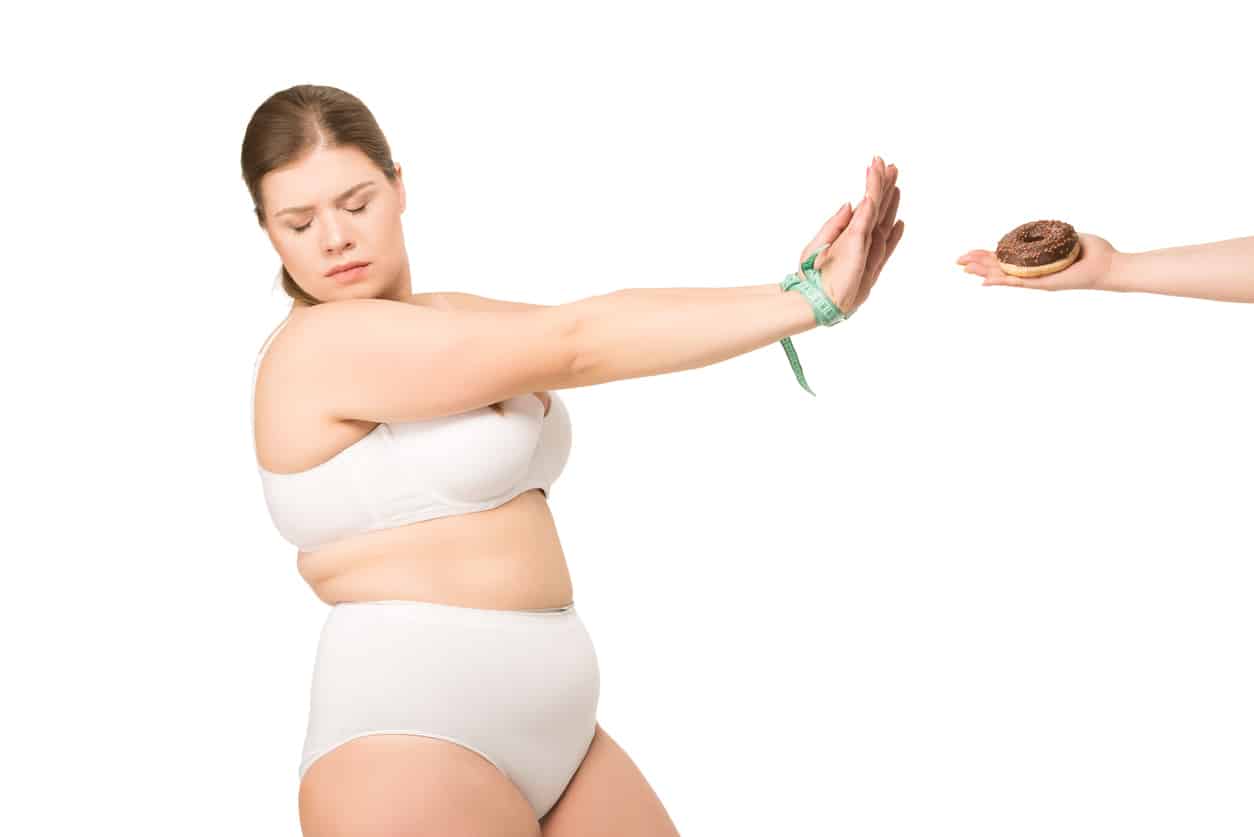
Being Mindful and Understanding Your Triggers
Another benefit of tracking your progress is that you develop mental resistance. That means that it displays all your triggers, and helps you become more mindful. Mindfulness is helpful for losing weight, but also maintaining weight loss.
As you track, you will notice patterns or trends in your data. You will see a clear picture of what makes you overeat or indulge. You can start to avoid foods or drinks that cause your weight to spike.
Drinks like alcohol can sabotage your weight loss goals, so keep up the focus. This can be hard to avoid when you want to have a normal social life. Going out to restaurants is a popular way to socialize, or have work meetings.
The most difficult aspect of avoiding triggers is resisting temptations. This is where tracking your progress comes in to save the day. It’s harder to give in to temptation when you know the consequences of overindulging.
While it’s hard to say “no,” you’ll be glad that you were strong and hit your weight loss goal.
What Are Body Measurements
We know tracking progress results are beneficial to our weight loss. Now, let’s get into what body measurements are. Body measurements are measurements of body parts like the neck, arms, torso, hips, and so on.
In America, the metric system most people use is inches to record track results. You might have a fitness coach that uses a tape measure for the body measurements. Most times, they use this to jot down your starting body measurements.
They wrap the tape measurement around each body part and see the total number of inches. Here’s everything you need to know about body measurements…
How to Take Body Measurements
Taking body measurements is all about precision, and placing the tape in the right place. It’s also important to note that taking body measurements will vary in women and men. That’s because, of course, women have a bust.
For the most part, the common body measurements for weight loss are:
- Arms
- Legs
- Waist [tummy or gut area]
- Hips
These areas will reduce in inches as you lose weight. It will also reveal details about your workout. Here’s an example.
If your waist is smaller, but the legs are bigger, then you’re practicing cardio or leg exercises. You body measurements are telling, and will more often tell you what you need to focus on.

How to Measure Biceps
Measuring biceps might be the trickiest of the body measurements. Don’t worry, it’s easy so long as you remember “flex.” That’s right when you’re measuring a bicep, you’ll need to flex the muscle.
The goal is to get the tape measure around the bicep at it’s highest point. The best way to tackle this measurement is to have the person flex their arm up. Then, tell them to flex their bicep muscle.
Wrap the tape measure around the bicep. Be sure not to pull too tight or let it hang loose. You want a good, solid tension on the tape measure for an accurate reading.
Then, write down the total inches on your recording device.
How to Measure Forearms
Measuring the forearm is along the same idea as the bicep. This measurement can be done with the arm pointing straightforward. Again, tell the person to flex their arm muscles, which will flex the forearm.
Wrap the tape measure around the forearm, below the elbow. Don’t put the tape measure on the elbow, and don’t get to close to the wrist. You’re looking for the highest point the muscle juts out.
Make sure your tape measure is level to the zero. Check the tension on the tape measure. Is it too tight or too loose?
Once you check all your bases, go ahead and take your measurement. Record the amount in inches in your recording device.
How to Measure Shoulders
Face the person you are measuring head on. Take the tape measure and hold it horizontal to the person. Then, place one end of the tape measure in the center of their chest area.
Take the other end and wrap it around their body so it goes over their back and around the other shoulder. Allow the other point to meet with the first end of the tape measure.
This is your measurement. Again, check for tape measurement tension and level the ends starting at zero. Record your measurement.
[For Women Only] How to Measure the Bust
Like a shoulder measurement, wrap the tape measure around the person. Keep the tape measure straight and horizontal. With a gentle tension, wrap the tape measure around the back of the woman.
Fishing the tape measure under each arm, let it rest against either side of the chest. Be sure to align the tape measure at the highest point of the bust.
How to Measure the Neck
The neck is the easiest measurement of all. For men, you’ll want to wrap the tape measure around the middle of the neck, below Adam’s apple. For women, it’s measured around the middle area of the neck.
Here, you want to ensure that the tape measure is straight and horizontal. Check the tense as usual, and line up the tape starting at zero for accuracy.
How to Measure the Waist
The waist for women is at the smallest point. Unlike muscles, you want to get the smallest point where the waist comes in. Picture putting on a belt.
You want to be sure the tape measure is straight and in a horizontal line. If it drops the reading will be inaccurate. Keep a solid tension on the tape measure to avoid inaccuracy.
Wrap the tape measure around the smallest point of the waist. Most times, this is between the space of the bottom of the ribcage and above the belly button. For men, you can gauge placement like women.
Use your hip bones for guidance. Feel out the area above to find out where your body caves in the most on each side.
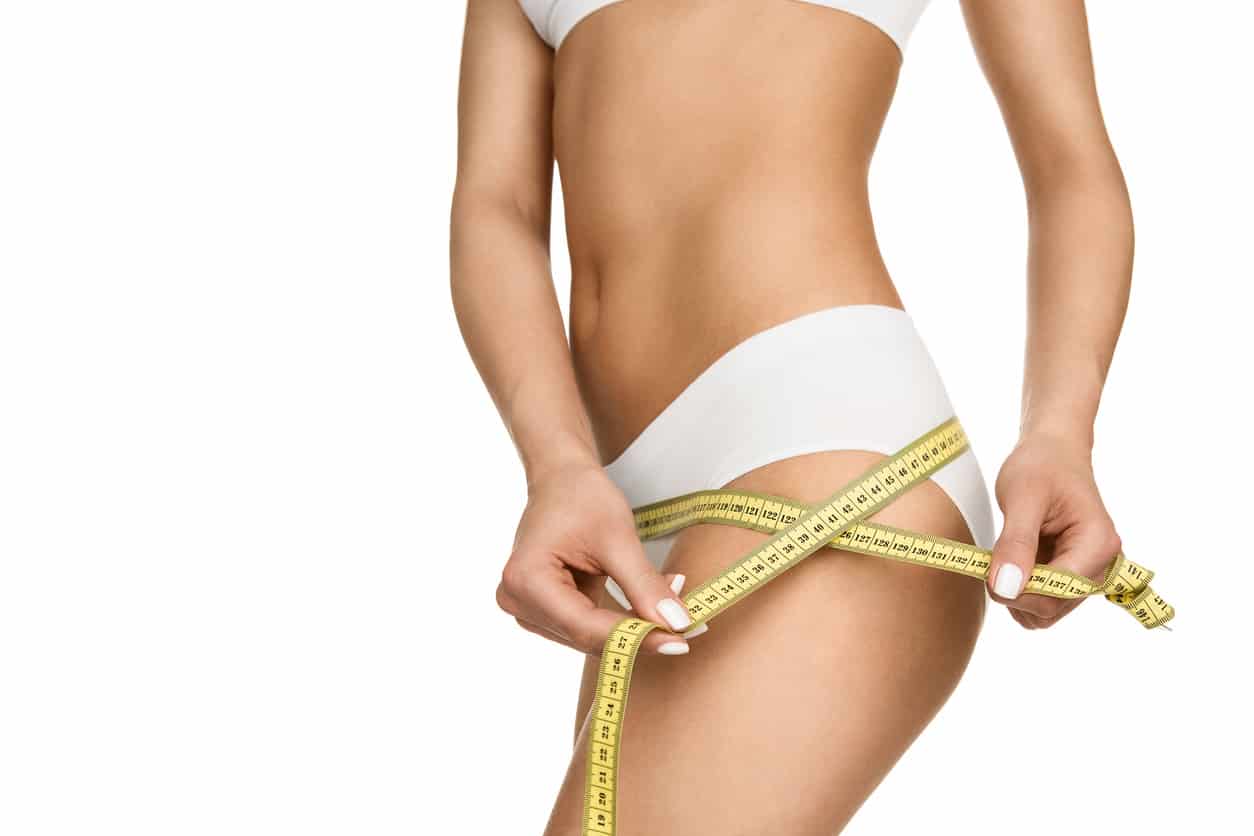
How to Measure the Hips
For both men and women, you’ll want to wrap the tape measure around the width of your hip space. Include in your measurement the highest point of your bottom. Wrap the tape measurement straight, tense, and horizontal.
Be sure to align the measurement with the zero for accuracy. Record your measurement.
How to Measure Thighs and Calves
The idea is the same with these bodies parts as it is for the others. You want to get the circumference of the thickest, or highest point of the muscle. Measure each leg by itself.
Wrap the tape measure around one thigh in the mid-section of the quad area. This is about three or four fingers down from the pelvic region. Remember, that the goal is to measure around the high point.
Measure the right leg the same. For the calves, start off with one leg. Again, look for the highest point of the muscle and wrap the tape measure around.
If you flex for one measurement, stay consistent. You’ll need to flex for all measurements to avoid mistakes later on. It’s good to make a note if you keep a body measurements chart or have a record keeping.
Body Measurements and Record Keeping
There are different ways to keep track of your progress. You might have a paper journal or graphing paper notebook. Some prefer other avenues like smartphone apps or even excel spreadsheets.
How you choose to record keep is up to you and your convenience. Each has its perks. Weight loss smartphone apps are versatile and nifty. You can download food apps for tracking food items you intake or tracking your workout.
If you like to check your heart rate during a workout, this is a great option. There are apps which will break down each food item you ingest. Some split foods into different percentage groups of nutrition.
This makes it especially easy to see your calorie count, macros, or fats/carbs/proteins. From here you can see if you are eating too many sugars or taking in too much protein.
Changing Your Life With Us
Want firsthand help on how to take body measurements? Let us give you a hand! Try out our popular 9-week challenge for the ultimate body transformation.
Leave 2018 in the past, and embody the new you with a literal new body. This challenge will get you access to all the resources you’ll need to make the change of a lifetime. You’ll get information on diet and nutrition, and workout routine tips and tricks.
Our 21 Day Body Transformation Challenge combines diet and exercise to transform your look. If you want to turn heads for the right reasons, find out more here.

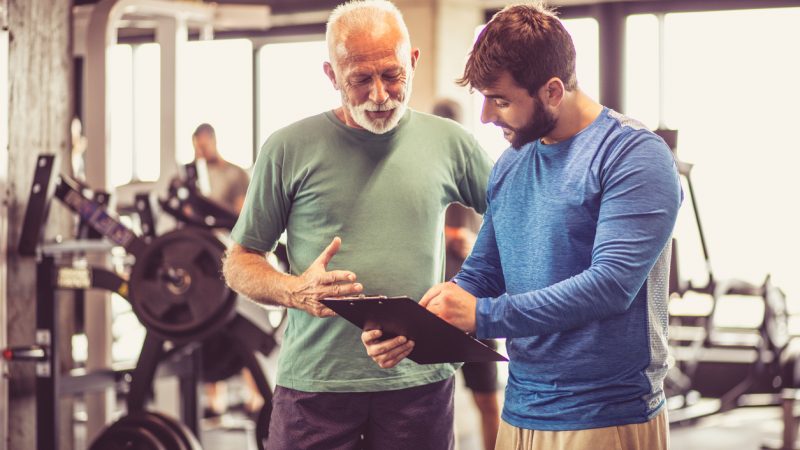

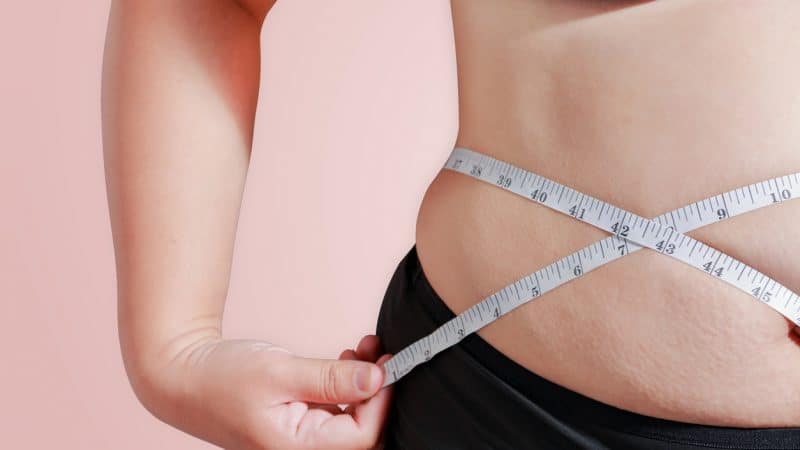
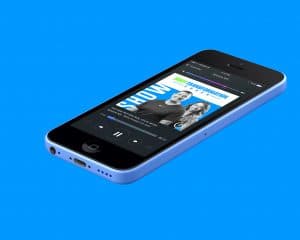
Recent Comments